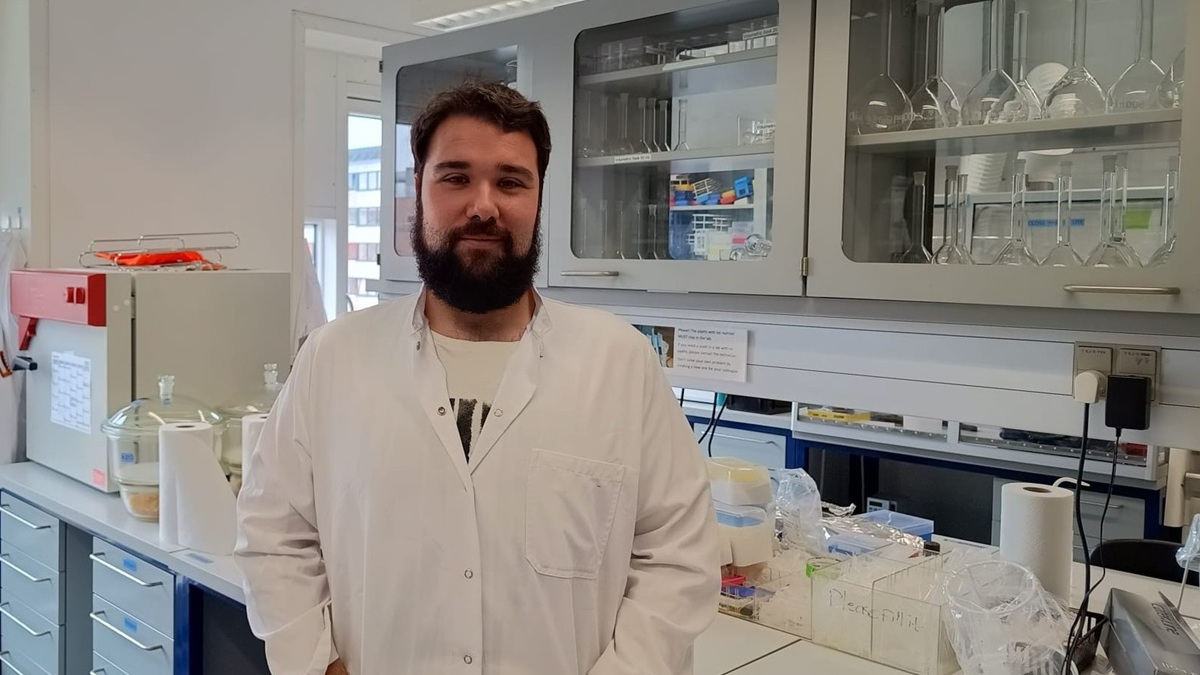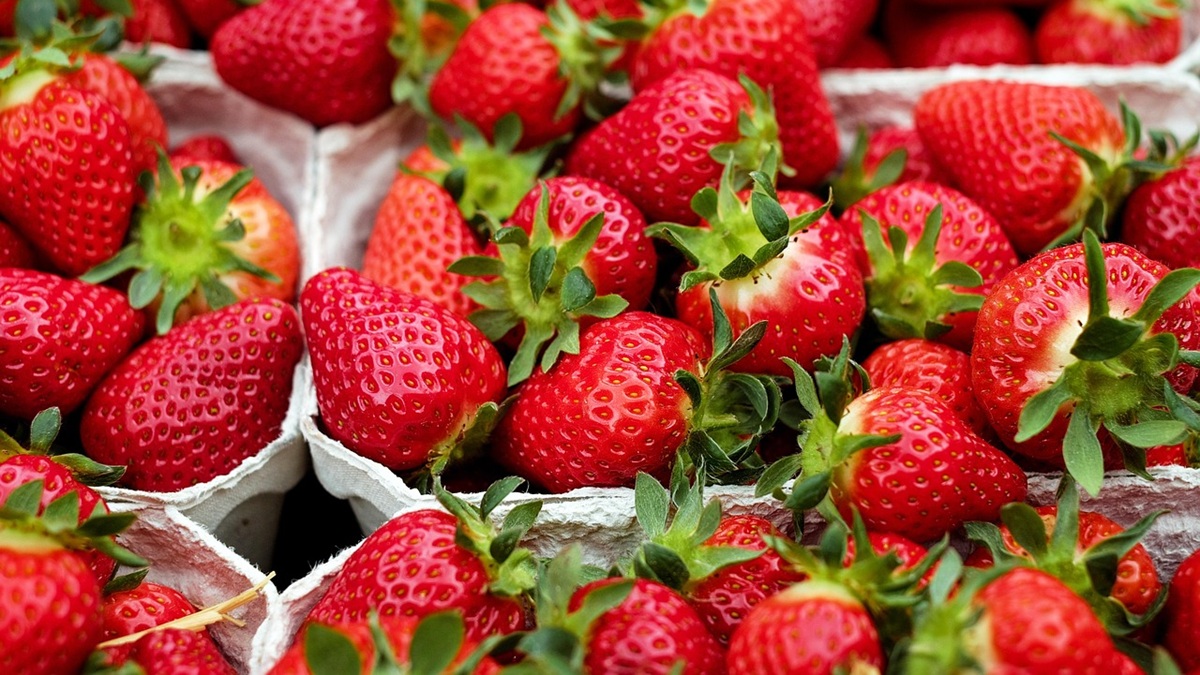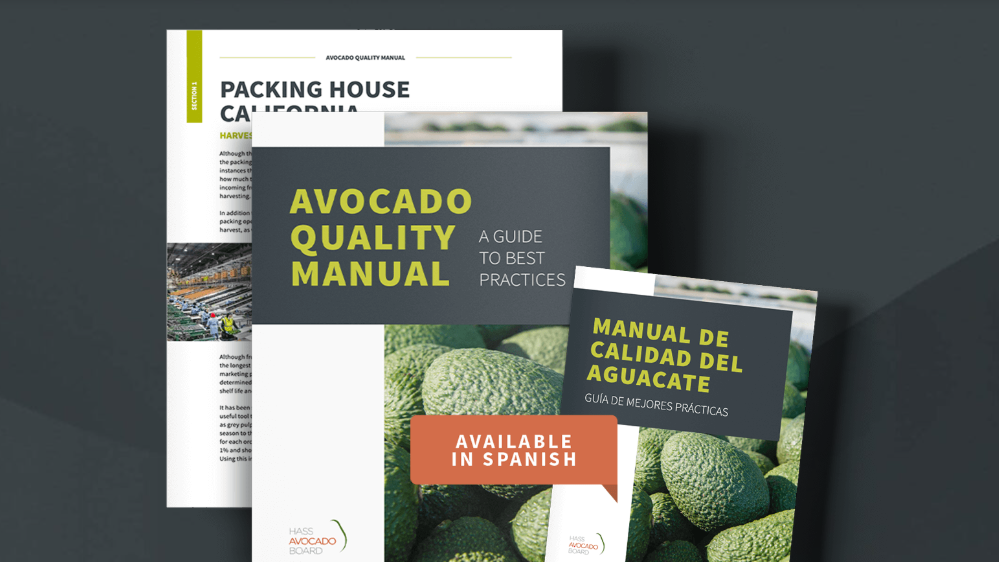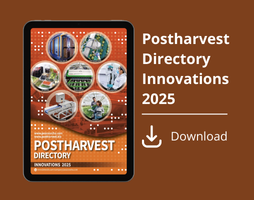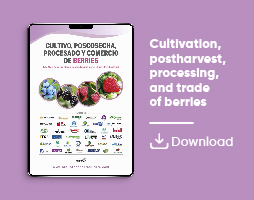Actualidad
Review about GRAS effects on postharvest of fruits and vegetables
Generally Recognized As Safe (GRAS) salts extend shelf life of fruit through several mechanisms such as antimicrobial properties, and induucing fruit resistance. It can be applied by dipping, fumigation, and incorporation into edible coatings.
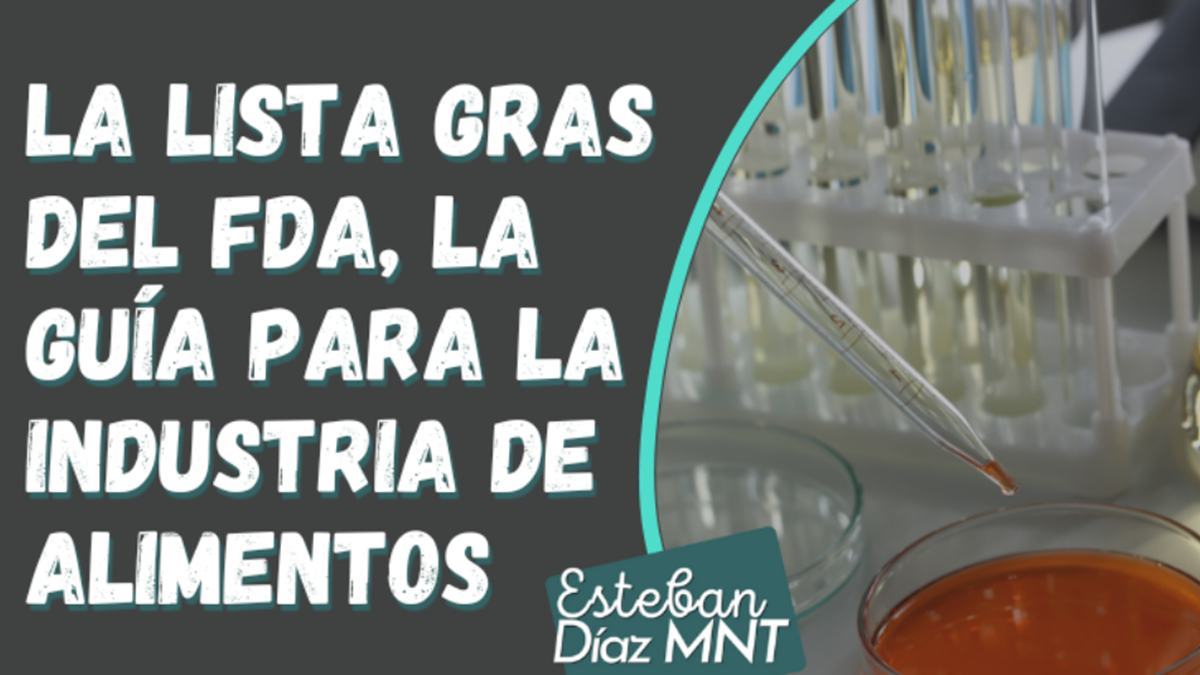
As consumers become increasingly aware of the nutritional and market value of fruit, postharvest decay and nutrient loss significantly reduce the economic value of fresh agricultural products.
Traditionally, physical, chemical, and biological treatments have been employed to mitigate these issues. However, concerns over cost, safety, and environmental pollution have prompted the search for safer postharvest solutions.
Generally Recognized As Safe (GRAS) salts, known for their safety and environmental friendliness, offer multiple benefits, including antimicrobial properties, the induction of fruit resistance, extended shelf life, and exemption from residue tolerances on agricultural commodities.
Aims of the study
This study aims to analyze the current understanding of the impact of postharvest application of GRAS salts on fruit quality and their inhibitory effects on postharvest pathogens, while also elucidating their mechanisms of action.
The review begins with an overview of the legislative framework surrounding the use of GRAS salts, detailing their specific applications across various fruits and describing the different compounds involved. Th
he practical applications of GRAS salts in the industry and explores their future prospects in postharvest preservation.
This review highlights the potential of GRAS salts in reducing losses and maintaining fruit quality, encouraging further research on their practical applications.
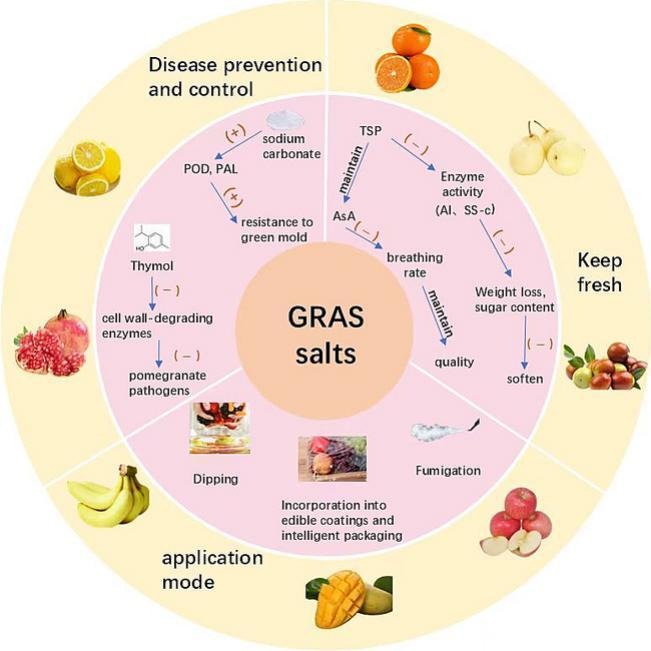
Graphical abstracct
Introduction
Fruits are rich sources of various nutrients and bioactive compounds known to exert health-promoting effects (Septembre-Malaterre et al., 2018). Recently, an increasing number of consumers have become aware of the role of fruit produce in combating chronic diseases, including cardiovascular diseases, cancer, diabetes, and obesity (Kalmpourtzidou et al., 2020).
As a result, the demand for fresh fruit has risen significantly, with their consumption increasing from 60.3 % to 72.9 % (Ansai and Wambogo, 2021). Moreover, fruit are highly valued for their pleasing sensory characteristics, such as taste, aroma, texture, color, gloss, and shape (Kumara and Arthurs, 2021).
However, fruit are highly perishable due to nutrient loss and infection by postharvest pathogens, which significantly reduce their market value. A substantial proportion of fresh produce is discarded at various stages of the supply chain, from the farm to the consumer, leading to considerable economic losses (Pandiselvam et al., 2017).
Fungal plant pathogens are among the primary culprits of quality deterioration in fruit. These pathogens are typically wound pathogens that infect through injuries sustained during harvesting, transportation, handling, storage, or retail sale (Hao et al., 2010; Palou et al., 2020).
In some cases, fungal infections result in the accumulation of mycotoxins, posing a significant threat to human health (Tripathi and Dubey, 2004).
Postharvest losses are estimated to reach up to 20–50 % in developing countries and about 20 % in developed countries (Shafiee-Jood and Cai, 2016; Palou, 2014; Smilanick et al., 2006). Consequently, there is a significant need for postharvest technologies to preserve and manage the quality of fruit (Yahia et al., 2011).
Producers of many significant fruit crops have been reported to rely heavily on conventional fungicides to extend shelf life. While these chemical fungicides are effective in safeguarding fresh produce, preventing postharvest diseases and physiological issues, and delaying aging, there are growing concerns about the potential health risks and environmental pollution stemming from their widespread use (Palou et al., 2016; Sun et al., 2019).
Additionally, the continued application of synthetic fungicides has resulted in the emergence of resistant biotypes among fungal pathogens. Resistant isolates, including single, double, and even triple-resistant strains, have appeared in commercial packinghouses, significantly reducing the efficacy of these fungicides (Palou et al., 2008a, Palou et al., 2008b).
Food aditives as alternative strategies
Consequently, the focus has shifted toward alternative strategies, such as using food additives, to control postharvest diseases and delay aging.Various organic and inorganic salts have been classified as ‘generally recognized as safe’ (GRAS) by the United States Food and Drug Administration (US FDA) or the European Food Safety Authority (EFSA), or as having an equivalent status by national legislations (Palou, 2018; D'Aquino and Palma, 2020).
The FDA exempts these salts from residue tolerance requirements on all agricultural commodities. Moreover, GRAS salts offer additional advantages, such as high solubility in water, ease of synthesis, great availability at relatively low cost, and antimicrobial action (Palou et al., 2008a, Palou et al., 2008b; Palou et al., 2016; Mills et al., 2004).
Consequently, they have become a promising area of research as a preferred alternative to synthetic fungicides for controlling postharvest diseases and extending the shelf life of fresh produce.
Generally, these alternative chemicals can be used on fruits and vegetables post-harvest in the form of aqueous solutions, vapors, or coatings (Mari et al., 2016).
However, current literature on the use of GRAS salts for preventing postharvest diseases in fruit mainly focuses on the inhibitory effects of one or several GRAS salts on specific postharvest pathogens (Shipman et al., 2021).
Lesser known aspects about GRAS
There is a significant lack of reports on broad-spectrum antibacterial GRAS salts. Additionally, there is no comprehensive review on the specific advantages and disadvantages of GRAS salts.
This review focuses on the regulations concerning edible GRAS salts, recent developments in their use for managing postharvest diseases in fruits and vegetables, and the possible mechanisms by which these salts act against postharvest pathogens.
The review also examines the limitations of previous studies and proposes future research and development directions for the widespread use of GRAS salts in the fruit and vegetable industry.
Sources
Pesticide Biochemistry and Physiology GRAS salts in postharvest fruit preservation: Disease control, freshness retention, and application mode
Juan Zhao, Yumei Wang, Kangyuan Xu, Jing He, Junjie Yi
Pesticide Biochemistry and Physiology https://www.sciencedirect.com/science/article/abs/pii/S0048357525000999
Picture
La Lista GRAS del FDA, la Guía para la Industria de Alimentos
https://www.linkedin.com/pulse/la-lista-gras-del-fda-gu%C3%ADa-para-industria-de-esteban-diaz-mnt-3btac/


